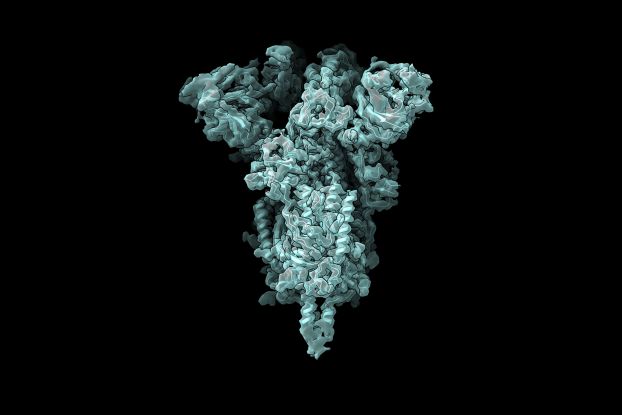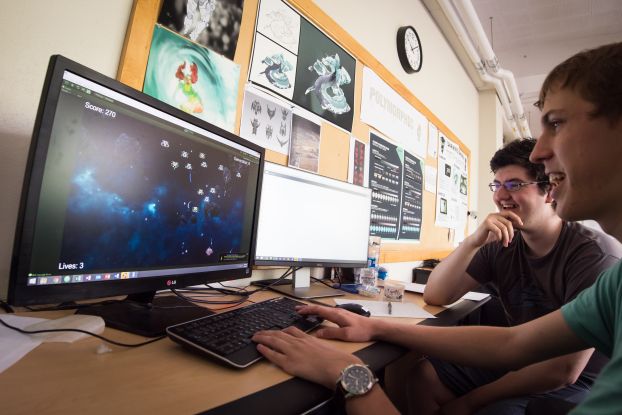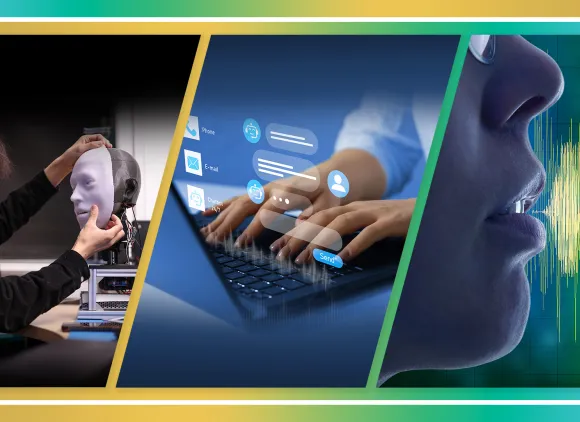
Credit: escapejaja/Adobe Stock
Predicting the unpredictable
Initially developed during the 1930s and 1940s to study natural occurrences like bacterial growth and gas molecule movement, stochastic modeling is the idea of capturing real-world randomness mathematically.
In the 1970s and 1980s, NSF-funded researchers, such as Monroe Donsker, Srinivasa Varadhan and Daniel Stroock, advanced these conceptual models, making them more powerful and adaptable. Today, stochastic modeling underpins technologies like GPS traffic routing, internet congestion management and speech recognition systems.
Deep learning, deeper insights
Neural networks — computational models inspired by the human brain — power technologies like photo-generation apps, digital assistants and advanced drug design.
In the 1980s, NSF-funded researchers made a breakthrough in which their neural networks recognized handwritten numbers. However, their early models were slow and too inaccurate to handle complex tasks. By the 2010s, researchers discovered how to use high-performance graphics-processing units to dramatically improve the speed and accuracy of the learning and inference processes of these models.
For example, DeepMind's AI-powered tool AlphaFold2, led by Demis Hassabis and John Jumper, accurately predicts protein complex structures from amino acid sequences, enabling new medical treatments. Their AI model solved a 50-year-old problem, earning the researchers a portion of the 2024 Nobel Prize in chemistry.

Credit: Courtesy of the researchers, using cryo-EM images provided by the authors of Walls et al. 2020

Credit: University of Idaho Visual Productions
Learning by doing
Reinforcement learning is a type of machine learning where an AI system learns from trial and error, receiving a "reward" for certain actions and penalties for mistakes. This technique, which trains AI to optimize decisions, has been used to improve water treatment facilities, develop language-learning apps, optimize supply chains and advance studies on creativity and addiction.
NSF-funded researcher Andrew Barto of the University of Massachusetts helped define the field, developing core algorithms and co-authoring its most influential textbook. His work laid the foundation for a dynamic field with wide-ranging scientific and practical applications.
Andrew Barto and Richard Sutton were awarded the 2024 Turing Award — often called the "Nobel Prize of computing" — for their pioneering contributions to reinforcement learning.
Duolingo taking flight
With over 500 million users, Duolingo is one of the most popular language-learning apps, using the power of large language AI models to create and design curricula and individualized lesson plans. Launched in 2011, Duolingo is rooted in decades of NSF-supported linguistic and AI-driven learning research.
In the 1980s, NSF supported the development of intelligent tutoring systems, which aim to bridge the gap between students' current ability and expert-level problem-solving, while identifying actions to help students grow their skills.
Today, NSF continues to advance AI-driven learning technology and experiences, including virtual teachers (both digital and robotic) that incorporate speech, gesture, gaze and facial expression.

Credit: Diego Thomazini/Shutterstock


